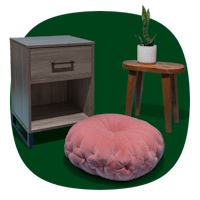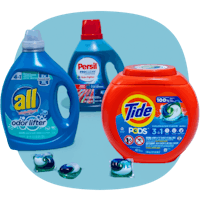I have to admit, I’m a definite stockpiler with clutter tendencies! The problem is you don’t realize you have “clutter tendencies” until the stockpile is well established and taking over. I started off with a small shelf about three feet long, but now I have a pantry, a set of five shelves and two refrigerators! Plus, personal hygiene items are hiding in the bathroom cabinets.
You may think that stockpiling is 100% beneficial because of the money you’ve saved, but there are actually five pitfalls you should avoid before you find yourself drowning in groceries and perishable items!
1. Letting your stockpile become limitless.
Your stockpile is out of control when it exceeds your storage space. When my stockpile of canned goods started lining up the stairs to the second floor, I knew I had exceeded my space. This is the point where you need to make two decisions: Don’t buy any more stuff until you’ve used what you have, and redesign your storage space. I looked at my available storage space and made a vow not to exceed my limits. If you have a small space to work with for your stockpile then make sure to read 6 Tips for Storing Your Stockpile When You Have Limited Space.
2. Keeping items in your stockpile (past their expiration dates).
One night I went on a search for some cereal and found 10 boxes in my stockpile that had expired. Sure, I purchased the cereal with coupons and on sale, so my out-of-pocket wasn’t that extreme, but we’re clearly not eating cereal at the same pace we were one year ago. Upon examining what had changed, I realized I had switched to yogurt for breakfast and my husband was eating fruit. Keeping your stockpile clear of expired foods will save storage space, money and keep you from “accidentally” dipping into some stale cereal. You should vow (and mark it on your calendar) to do a monthly stockpile review—this will allow you to evaluate what you have (and how much you’re actually using) before you go out and buy more.
3. Stockpiling items you won’t actually use.
Those 10 boxes of cereal had to be thrown away. Even with saving money on the purchase, I still lost money. Why would two adults need 10 boxes of cereal anyway? After this, I decided to check out my food stockpile for unused items. I had bought several “new” items with coupons and had never used them. Thankfully, they were still within date, so I moved them to the front of the shelf.
At the end of the day, I had learned that you shouldn’t buy items you won’t use (even if they’re free) unless you’re planning to donate those items. You should only keep your stockpile full of things you’re actually going to use.
4. Putting your stockpile in extreme temperatures.
One of the pitfalls of stockpiling is the location of your storage. Certain foods have to be stored in specific temperatures or not exposed to excessive heat. Not storing items at the proper temperature can cause food to expire more quickly and go to waste. Ultimately, I’ve made the decision to stockpile all food items inside my house where there are no extreme temperatures. If you’re in an area that’s hot, you should read this article. If you live in an area that’s primarily cold, you should consult this post.
5. Making your stockpile a safety hazard.
The most important thing to remember in stockpiling is to stockpile safely. If the stockpile is stacked so high that items could fall and hit you on the head—it’s not safe. If your stockpile blocks a path you would need to exit in case of a fire—it’s a fire hazard. If you have flammable products near a fireplace or gas stove—those are screaming fire hazard! If you’re having problems with keeping your stockpile safe—think about reorganizing it, and look for some new ideas in this article.
































Tell us what you think